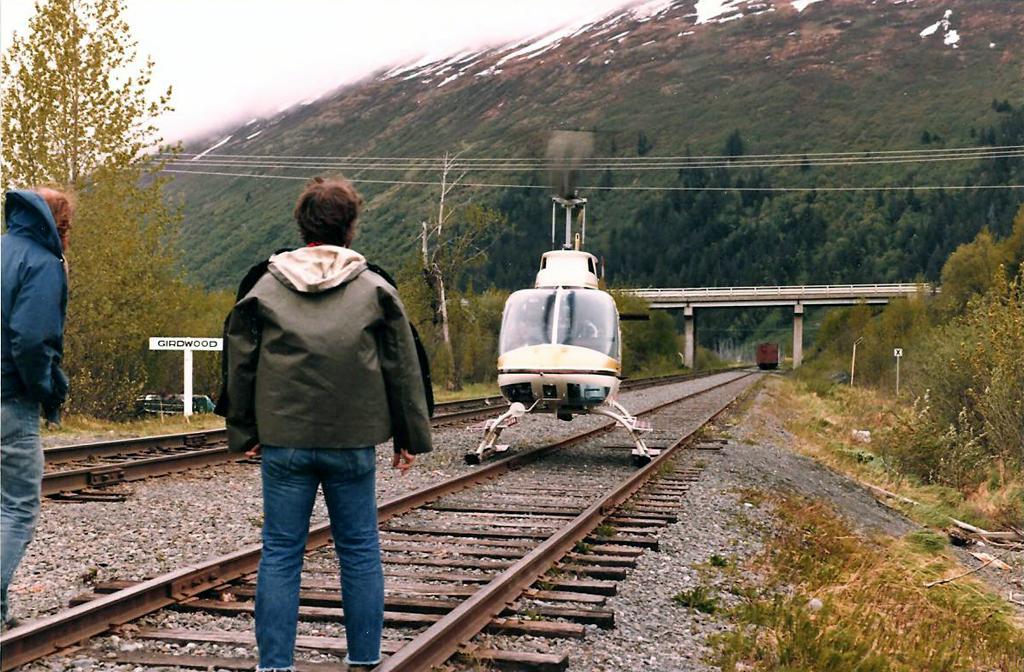Portraying the various types of work and special challenges that occur along the rails of the Alaska Railroad
Prior to transferring the Alaska Railroad from the Federal Government to the State of Alaska in 1985, the entire railroad (and its land holdings) needed to be surveyed. To do this the Bureau of Land Management approached it in two ways starting in 1983. Ground crews using hi-rails set up control points and then physically surveyed the tracks and right-of-way. Although the helicopters provided some support for the survey party's, their primary purpose was to set up remote Doppler Stations and to use what was called an "Auto-Surveyor" which was a navigation system from an F-4 fighter plane modified for surveying. The tricky part of the Auto-Surveyor was the fact that it had to stop and remain stationary every so often so that it could update itself. Oftentimes that meant a quick landing on the tracks. In those days track cars were governed by Authority Line-Ups and technically the helicopters were "track cars." What this meant was that the railroad flag person in the helicopter had to ensure that no trains or other track cars were in the area if the helicopter landed fouling the tracks. In areas with a lot of curves, the flagman had to be on their toes to make sure something catastrophic did not happen. |
 |
